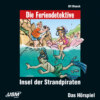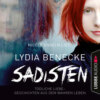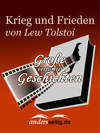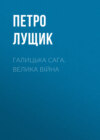Kitabı oku: «Ginger Geezer: The Life of Vivian Stanshall», sayfa 2
Both Stanshall boys indulged a lifelong passion for accumulating rubbish and junk from sales. ‘I collected glass and bits of silver and pictures,’ says Mark. ‘We were always bringing stuff back home.’ By the age of fourteen, Anthony was amassing a collection of 78 r.p.m. records. He had bought a gramophone with the old-fashioned horn amplifier for 17s/6d on which he played a selection of numbers which formed the basis for the Bonzos’ act. ‘I remember he bought a record by the Alberts called “Sleepy Valley”, which was played on the Phono-fiddle,’ recalls Mark. Bonzo member Neil Innes also nurtured an affection for this ghastly instrument: ‘The solitary string was raised by something that resembled a violin bridge and only vigorous pressure from a violin bow could entice sounds that ranged from a low, thin, melancholic wail to an utterly unattractive high-pitched shriek.’17 Needless to say, young Anthony loved it.
During the school holidays, Anthony was a part-time bingo caller in Southend, where he learned all the patter. The focus for carefree childhood memories was the beloved Kursaal funhouse. It had, he later said, an ‘antique fin de siècle charm about it, with a grey-and-pig’s-kidney-coloured colonnade. Then there’s quite a lofty dome atop that, with a kind of mosque-ish top. A pleasure dome.’18 He started his fairground career collecting pennies from the slot machines. Inside the building he worked on the dodgems and eventually got to guard the celebrated water chute. It was an absorbing, year-round occupation. Out of season, Stanshall helped to maintain the attractions, painting the carousel horses and the ghost train.
Southend-on-Sea was an adventure playground outside work and school hours. It was where a youngster could roam the streets as a teddy boy. In the mid-1950s, British boys and girls thrilled to the new sounds from the States, together with the paraphernalia of being a teenager: B-movies, horror comics, pop records and trendy fashions. Where once they had jived to Ted Heath and his Orchestra, they now learned to rock’n’roll to Bill Haley and the Comets, Elvis Presley, Gene Vincent and Little Richard. Aged just eleven when rock’n’roll first broke, Anthony was too young to be in with the gangs. He bought his first pop records instead: ‘Rock with the Caveman’ by Tommy Steele and ‘Giannina Mia’ by Gracie Fields.
English kids adopted the clothes, slang and violent habits of teddy boys, taking their name from the Edwardian styles that became fashionable at the start of the decade: drape jackets with velvet collars and thick-soled shoes nick-named brothel creepers. On the back cover of Stanshall’s 1981 album Teddy Boys Don’t Knit, there is a black-and-white snapshot of him as a youngster, sitting sprawled with his mates on a bench in the street. They loaf in the maliciously indolent way that only teenage boys can, under a Southend police noticeboard. A ‘Keep Britain Tidy’ poster depicts a huge finger pointing directly at Stanshall’s head. Clad in blue suede shoes and drainpipe jeans and sporting a Tony Curtis hairstyle, he sits and grins, sporting the kind of expression that members of the officer class might have interpreted as dumb insolence.
Being a ted ‘meant wearing second-hand clothes with collarless shirts and corduroy suits’, remembers Mark Stanshall. ‘Vivian always took it to the max and wore a complete frock coat and top hat. He always loved to be looked at and liked to be the centre of attention.’ Twenty of them on motorbikes would tear around, waking up the neighbourhood. ‘My father, being ultra-conservative, couldn’t cope with a son who was always wandering about looking like a Victorian doctor with all these musical instruments piling up.’
The teds were the toughest of all working-class lads, notorious for gang fights with bicycle chains, particularly at such south London flashpoints as the Elephant and Castle. The craze spread all over the country and was established in Southend just as a teenaged Stanshall headed for the streets in search of freedom. There he found a gang culture that appealed to a growing love of ritual, folklore and strange languages. There would be battles on the pier that was supposedly the preserve of pleasure-seeking families, between the Leigh gang, the Benfleet boys and the Southend mob. By the time he was sixteen, Anthony ran with the local Leigh boys. Inconveniently for his street cred, Eileen had taught him to crochet as a young child. This was anathema to his fellow-gang members, as he attested in the aforementioned album title, Teddy Boys Don’t Knit. His posh accent surfaced occasionally, but this meant he was tolerated as an ‘amusing mascot’ by the gang. A rival team of interlopers might come down from Dagenham and from the pier entrance right up to the High Street there would be a reception committee.
It was a testosterone-fuelled time for Anthony and he later worked it into his music. ‘When I feel particularly aggressive…I use the most aggressive part of my life which I suppose was the 1950s when I was a teddy boy.’19 He was arrested with his gang, instilling in him a healthy disrespect for the law – or at least the law as practised in Southend.
‘The police were notorious, and I was falsely accused of assaulting a policeman,’ he later said. ‘I was said to have hit a policeman with such force he had to be picked off the pavement. It was absolute rubbish, but I was found guilty. I had to spend a night in a cell with the light on all the time, and I wasn’t allowed to use the lavatory. It was hateful. I think there should be more education for the police.’20 Back home, he hid the drape jacket and drainpipe trousers behind the coal bunker to become well-behaved Narnie indoors.
Street culture met his artistic influences and laid the foundations for a serious drink problem. According to his second wife, Ki Longfellow: ‘He believed all this shit about what a real artist goes through,’ she says. ‘A real artist drinks red wine and smokes and lives in a garret. A really great artist dies young. So he began drinking when he was thirteen years old, but this was normal, hanging out with the guys he met on the streets.’ He was beginning to find out who he was – and that was different: ‘I didn’t enjoy it,’ he later told an interviewer. ‘It’s just that when I was thirteen and growing my first beard, I just went up to the top of my road in Leigh-on-Sea. I was pointed out by a little boy and his mother said, “Shh…He’s a crank.” So I thought, “That’s it, that’s what I am.” I mean, it’s very handy to know what you are.’21
The other important teenage business was love. His first love was a girl named Mary. They met when he was fifteen and he was ‘insanely in love’ with her for many years. She thought he looked like nothing on earth, with his colourful clothes and his newly acquired artist’s beret. He rode to her school on his bone-shaker bicycle, waiting for her near the tennis courts. She too was taught by nuns, who instinctively disapproved of this strange young man and banned her from going out at lunchtime. Waving at Mary from the side of the tennis courts, Stanshall attracted the attention of the PE teacher, who became convinced there was a pervert near the grounds. The teacher strode over and told him to make himself scarce. Mary’s attempts to explain that it was all right because she knew this particular ‘pervert’ fell on deaf ears.
Neither of the two young people had much money and were rarely on their own together. They went for long walks along the seafront by Old Leigh and out on the sands. Mary was invited to the Stanshall house where, to her astonishment, her boyfriend was called Anthony – by now he was Vivian to everyone outside the familial home. The atmosphere chilled when the boy’s father returned, Eileen’s personality changed and the house became quieter. After that, Mary did not visit when Stanshall Senior was at home.
Anthony was now Vivian, much to his mother’s chagrin. He later made the change of name permanent. ‘He did it properly by deed poll,’ says Eileen. ‘He did that because he wanted to be in show business and he thought it sounded better.’ Vivian wanted another name change too: he asked Mary to marry him. Eileen did not approve. She was certain the girl was too young to understand her true feelings. She also knew that she wanted her son to finish art school and so she took Mary into the kitchen one day to tell her that the wedding would not have her blessing or that of her husband.
‘If you love him, you’ll wait,’ she told Mary. They might have waited until Vivian was twenty-two, but it was never to be. This was not because of Eileen: she was adamant that her Narnie would never go behind her back and Vivian was just as certain that he could have done so. It did not come to that. Crushingly, Mary turned him down. Vivian cried for a week and always believed that Mary came to her decision because she lacked faith in him. While he might have been colourful and great fun to be with, underneath it all he thought that in her eyes he would never amount to anything. Yet his career prospects were the last thing on her mind.
‘I just didn’t believe you, that’s the bottom line,’ Mary admitted to Vivian when they met years later. ‘I just didn’t take you seriously, ever, because you used to disappear out of my life and then suddenly turn up again.’22 The relationship ended, but the couple would never forget the vivid memories of their first love. Vivian was even more determined to get his degree.
2 So the Boys Got Together and Formed a Band…
1961–65
In 1961 Vivian Stanshall went to sea. The plan was to earn enough money to fund study at Central School of Art. He was admitted without having any formal qualifications from his school days. Oddly enough, for someone whose success was to come largely from a dazzling use of vocabulary, his educational skills were relatively secondary compared with the tactile instincts of the artist.
‘I remember smells, tastes and colours which I can recall at any time, but I couldn’t quote you anything. I do engulf quite a lot of books, but it’s not ordered – there’s no structure,’ he said. ‘I freely admit to being in awe and jealous of people who have a classical education. The best education is the yooniversity o’ life, innit?’1 There were two problems with financing college and both of them were to do with his father: Vic earned too much money to qualify for a large enough grant for his son and ‘equated artists with gypsies and ne’er-do-wells’. He would not give Vivian enough to get him through art school. His son entered the Merchant Navy.
Tourist Waiter Stanshall was engaged aboard the liner Orsova at Tilbury in Essex, on 12 May 1961. He was blossoming into quite an imposing young man in every way: as well as hair worn long for much of his life (even when it began to fall out), he had very delicate hands, like those of a classical pianist. They seemed incongruous against his large frame, and he always took great care of them, particularly his right hand: he was ambidextrous, but this was what he called his ‘magic hand’.
The Orsova set sail for Hong Kong, Singapore, Borneo and Sydney, Australia from Southampton. On board he refined his ability to drink, belch, fart, smoke and fight, which would be vitally important in his career with the Bonzos. He also developed a lifelong interest in knives, inscribing one with ‘AS’ for ‘Anthony Stanshall’. There was plenty of time to indulge a voracious appetite, which played havoc with his waistline. He would amaze his seafaring chums at lunch by devouring four pork chops, held between the greasy fingers of one hand.
Tourist Waiter Stanshall was demoted mid-cruise for spilling hot soup down a passenger’s neck and banished below decks to join the ‘U Gang’ (‘U’ for ‘Utility’). ‘Down there were all the most useless, terrible, vulgar sort of people,’ says fellow-Bonzo Rodney Slater. ‘They were all the “geezers” who weren’t allowed on deck to be seen by the public. They were confined to the bowels of the ship and were only let out after dark! He loved those guys, the stokers, the guys who cleaned out the latrines, the hard cases below decks.’ At least below decks you didn’t have to worry about how you looked. Vivian recalled, ‘You didn’t have to mix with the passengers and could grow a beard.’2 Because of his height, he was encouraged by his shipmates to try deck boxing. Vivian got his face punched in every time.
‘He had to do it, yet he hated it,’ explains his son Rupert. ‘He was a dreadful coward really. He went through with the ordeal but he’d go down with the first punch. The guys would be telling him, “Go on, you can do it. You’re a big lad!” And then they’d put money on the other guy. Dad suggested that I went into the Merchant Navy myself at one stage but I didn’t fancy that.’ When the liner docked, there was an opportunity to get away from the ship’s discipline. In far-off Port Moresby in Papua, New Guinea, Vivian said he went through a blood-brother initiation ceremony with a tribal people.
‘The bushes parted and a savage face peered out and somehow intimated that he would like me to follow him,’ Vivian later told a journalist friend. ‘Being a young man, I went.’3 How many of the magnificent tales of nautical adventures and outrageous exploits were strictly true was a matter for conjecture among his friends back in England. He told the stories well, kept his audiences captivated and so the accuracy really did not matter to them.
‘I got the feeling the story changed as time progressed,’ says Monica. ‘Eventually the story encompassed the entire world, but I’m not sure that the trip did. He certainly liked the idea of initiation ceremonies.’ He also liked to bewitch friends with the account of his visit to a restaurant in Hong Kong where he had monkey-brain soup. He described sitting there surrounded by monkeys in cages mounted on the restaurant walls. ‘You ordered soup and these monkeys knew what was coming,’ he related with ghoulish delight. ‘The chef pointed at one and the monkey screamed its head off.’
Seaman Stanshall was discharged from the Orsova on 16 October 1961 at Tilbury. Armed with the savings from his life at sea, he became a fully-fledged art student and began to lead the kind of life his father had warned him about. After a stint at West Essex School of Art, Vivian, aged nineteen, enrolled at London’s Central School of Art, off Kingsway, in the autumn of 1962. He was overjoyed at his new-found freedom as a student living in town and his parents were there to help him choose digs. He did not like the first flat at all. ‘Vic and Anthony went in,’ says Eileen. ‘Well, it was about four minutes later that Anthony came out, put his hankie to his nose and said: “I couldn’t live in there. Terrible smell, Mum.”’ They had better luck with the next flat and Vivian had better luck with the landlady.
‘After a while he came home one weekend, and I said, “How are you getting on with that woman?” He said, “She’s wearing me out. I’ll have to dump her. I can’t stand it.” So what he got up to with that woman I don’t know. I didn’t like to go into it any further. But he never had any bother getting girlfriends. They all seemed to like him and it seemed as if he knew a lot of people.’ Vivian settled in well and proceeded to eat his way through his grant very quickly, forcing him to rely on friends to supply fish and chips. He spent much of the rest of his money on unusual brass and stringed instruments. Vivian had more than thirty instruments, including ukuleles, mandolins, recorders, ocarinas, and – most cherished – a tuba and a euphonium.
Vivian commuted to college on the underground. He regularly created public situations filled with tension to see what people’s reactions would be, a fascination with pushing the boundaries which stayed with him for most of his life: ‘I started testing people when I was travelling by tube to Central School of Art,’ he said. ‘I bought some stuff called Wasp-Eez, which I bought for the name. I would scratch or roll up my trousers and apply Wasp-Eez and then I would find that the carriage would empty or they’d move away, and it’s like the old one, if you start scratching, everyone starts scratching.
‘I became very fast with the Evening News and the Evening Standard crosswords, which are cryptic. Since I’m left-handed, I write on the side. So everyone sits on the train doing the same crossword and I would fill in completely the wrong answer, but near enough to look convincing, which would bugger up the guy next to me. What becomes difficult is fitting in other words or getting a word to fit. But if you do this with confidence then he is truly thrown.’4 On other occasions, Vivian would slowly and deliberately black in the whole of the crossword, square-by-square: ‘and that was disturbing’.
He later teamed up with college chum and future Bonzo drummer Larry Smith to play more involved pranks. ‘I have a rubber hand. This is an idea I got from a Victorian pickpocket, who would go to church and have false hands in prayer in the front while she was dipping her fellow-worshippers,’ explained Vivian. ‘I would have these obvious false hands and have Larry next to me and pick his bag, steal things very obviously to see if anyone would stop me. And people wouldn’t do a thing! They would continue to read and if I looked at them, fixed them, to see if I was caught, they would return to their newspapers. They didn’t in any way want to be involved.’5 This was what struck Vivian. An individual could be in any kind of trouble or distress and everyone would pretend that there was nothing happening.
‘I mean, we staged hangings,’ he said. ‘I came in with a hangman’s noose and put this on top of one of the strap things and put it around my neck and stood on the seat ready to hang myself and jump off and it would be too long, you see, so that would be a nuisance. I’d keep shortening the rope and people would just watch this, they wouldn’t try to intervene – it was absurd.’6
There were plenty of other like-minded new friends at the college. Roger Wilkes was a fellow-musician who taught Vivian to play trumpet properly. Rodney Slater got to know him through the tight-knit art students’ social circuit. Pop Art was becoming fashionable, which meant that a poor student keen on collecting could pick up the relics of the jazz age for next to nothing: ‘Nobody wanted all the memorabilia like the old sheet music and gramophone records,’ says Rodney. ‘The grown-up world was the world of your parents, which you didn’t want.’ The students saw nothing of much interest in the blossoming teenage movements.
‘Kids were already being exploited in terms of clothes and music. One sniffed a rat even back then. If you were a certain kind of person you just didn’t belong in either world. You had to make your own world of craziness. Which was…the band. As members of the Bonzo Dog Doo Dah Band we lived our lives in the same way all the time, on stage and off. We remained individuals within the group but at the time we did it without thinking. It was just the thing to do.’ Rodney Slater, a powerful master blower of the bass and baritone saxophone, was born in Croland, Lincolnshire in 1941. He played in a trad-jazz band with two friends from college, Chris Jennings and Tom Parkinson. They met trumpeter Roger Wilkes, drummer Sam Spoons and Trevor Brown, who played college dances, at the Royal College of Art. Together with Rodney and his friends, they formed a new outfit, influenced by bands like the Alberts, the Firehouse Five and the Temperance Seven. They met Vivian the day before he was due to start at college.
‘He had nowhere to live,’ says Rodney. ‘Tom met him at the Pillars of Hercules boozer and brought him home. We were living in West Dulwich then. I had actually seen Viv at a party a few months previous. We were playing at some old church in Westbourne Grove and Viv arrived wearing a frock coat and a huge red beard. He was prancing around and kind of performing in the pulpit and I thought, “That’s an interesting guy!” Then it all went crazy and the police came and before I could talk to him we all had to leave.’ When Vivian arrived at Rod and Tom’s flat in West Dulwich, he made himself at home and was invited to join in their music-making. Vivian recalled: ‘There were instruments all over the place at Rod’s house and he said, “Do you think you could play tuba?” and so I started with that. They didn’t have a vocalist.’ Rodney and Tom brought Vivian along to the Royal College of Art for an evening session. Vivian listened for a while and then asked Roger if he could get up and sing something. ‘He did either “I’m Forever Blowing Bubbles” or “The Sheik of Araby”,’ says Roger Wilkes. He delivered the song with a comic edge and was asked to join.
‘I started posturing at the front,’ Vivian said, ‘got the smell of it and started dominating a bit, singing lyrics out of newspapers – all very Dada.’ The actual date of the formation of the Bonzos was the night of 25 September 1962, when Rodney and Vivian decided to stay up late and listen to a transatlantic broadcast of a crucial boxing match between heavyweight fighters Floyd Patterson and Sonny Liston in Cominsky Park, Chicago. The young musicians decided on the name of the band while they waited for the broadcast to begin. The fight lasted for two minutes and six seconds. The Bonzos clocked in at eight years. ‘Tom had come home to listen to the fight on the radio and brought Viv with him,’ explains Rodney. ‘We started talking about the things we liked and we all decided we’d like to have Viv as a member of our band. He couldn’t really play anything. He was just a character. He did have a guitar with him and plonked away but he was going to be the singer.’ Vivian readily admitted that he had not had any formal coaching in music: ‘No. I wish to God I had. I think if I had done, I wouldn’t have had the gall to make a row, I’m sure I wouldn’t,’ he later said. ‘As people dropped out in the old band, so I took over whatever was needed.’7
Their name was the Bonzo Dog Dada Band, in honour of both the artist George Studdy’s popular cartoon dog Bonzo and the Dada art movement. The Dadaists sought to overturn preconceived ideas about what art should be. With his 1917 piece, ‘Fountain’, one of the leading lights of Dada, Marcel Duchamp (1887–1968), took an ordinary urinal, signed it ‘R. Mutt’ and submitted it to a New York exhibition, causing outrage and consternation when it was predictably rejected. By decreeing that it was art, he said, surely the artist has then made it art? It was this sense of fun and anarchic rule-breaking that was alive in the Bonzos. What they wanted to say or play was always going to be more important than appearing to be the best in the neighbourhood, or the highest paid. Like the Dadaists, the Bonzos had a love of their medium and similarly refused to stick with one style, moving from jazz to rock as the mood took them, continually experimenting and provoking their audience. Both Duchamp and Stanshall produced relatively little work, much of which was deceptively simple. They were fond of using puns, private in-jokes and references, wilfully obscure symbols and lots of innuendo.
The ‘art-school Dadaism thing’, as Bonzo Roger Spear puts it, was also the inspiration for some of the weird and wonderful effects. ‘We used to use everyday things to confuse people. Instead of “Mr Jones” on a name plate outside a house, you’d put “Shopping Bag”. Shirts and trousers – they’re just good names. In fact I once bought a house, went up into the attic and there was a trouser press.’ Roger immediately used it in the band. The Dadaists also created machines, as Roger would later do in the band. In 1959, Duchamp put together ‘Rotoreliefs’, machines powering discs with patterns on them. As they rotated, they would give the impression of three-dimensional images.
The musicians quickly tired of explaining what Dada was about and the band became the Bonzo Dog Doo Dah Band and then just the plain old Bonzo Dog Band by 1968. Stanshall commented: ‘I’m tired of people joking with the name. I remember a chap at school called Smellit who kept mice. His life was made hell. Yet the bullies were called Sagger and Belcher.’
As for the Doo Dah, Rodney Slater says: ‘I never came across anyone who used those words “Doo Dah”’ except my mother, who used them all the time: “Oh, fetch me the doodah.” When Rod met Vivian, he was surprised to hear him using the same quaint expressions. ‘We both loved these strange expressions people used in different parts of the country.’ At Maida Vale tube station one day, they heard that the train was cancelled. ‘Bugger my rags,’ exclaimed Rodney. Vivian had never heard that expression and he ‘literally lay on the floor and was uncontrollable. Anything like that really made him laugh.’ Vivian introduced him to Southend expressions. Vivian was fascinated by language and was always developing his vocabulary. During the first three years of the band’s existence he went to night school to catch up with everything he’d missed out on at school. He studied English literature and German at night school and was very serious about it, going to the evening class before he’d go to the pub.
‘He adored Hitler’s speeches,’ says Rodney. ‘Not because of what was said in them, but the way he delivered them. It was the hysteria that he created which Viv loved. He’d sit there listening to these speeches and began acting them out himself. We even painted a huge swastika on the ceiling of the flat we shared. You could see it from the street, if you knew where to look up at the first floor. There was this red ceiling with a big black swastika on a white background.’ They shared the same sense of humour, danger and the ridiculous: on one occasion they returned to their flat from the pub by lying down in the middle of the road and rolling through Dulwich Village all the way home.
Until the end of 1962, the band line-up featured Vivian (mega-phone), Rodney Slater (clarinet), Roger Wilkes (tenor horn), Tom Parkinson (sousaphone), Trevor Brown (banjo), Chris Jennings (trombone) and a drummer from St Martin’s called Tom Hedges, plus any number of friends stopping in on a temporary basis. The students played at the Prince of Wales, a pub in Notting Hill Gate, and during intervals at St Martin’s School of Art, at Central School of Art, the Royal College of Art and Camberwell College of Art. Most of the students from these colleges scattered across London would descend on the Royal College on Friday nights intent on tanking up. The main hall had a big stage and an upstairs bar which could cater for three hundred people. Rehearsals for the band were either on the main stage or in a room above the hall and people would drop in to hear them playing.
They were treated to a highly erratic form of 1920s jazz, far removed from the straight style of the big trad act of the time, the Temperance Seven, fronted by Paul McDowell. Vivian had a feel for comedy and within a couple of months he started to dress up. For ‘Sheik of Araby’ he’d wear a large Arab head-dress. He was a natural comic, making wonderful stage entrances and provoking laughter in the audience before reaching the microphone. It was fun, but it was strictly a hobby, an excuse for anyone to join and ‘make a row’, as the band called it. Something to get away from studying. Art schools played a vitally important role in the development of the British pop and rock scene. The Who, the Kinks, even blues bands like the Pretty Things, Yardbirds and Cream, had art-school origins. The colleges provided a kind of support structure for a breed of highly motivated, energized youngsters desperately seeking opportunities for self-expression. If the hard graft of painting, drawing and design became too demanding, playing music provided a more instantly satisfying lifestyle. Art colleges underpinned the British music industry, providing grants, entertainment budgets, rehearsal facilities, venues and a ready audience.
Music-making could also be a distraction from art. Vivian wanted to be a great artist, his music always a secondary concern, no matter how well he did. ‘Painting was so important to him that if he couldn’t do it – it would have killed him,’ says Ki Longfellow, Vivian’s second wife. ‘So it didn’t matter if he fucked up the music side and wasn’t taken seriously because that’s not who he was. He could play at being a pop star or play at being a lyricist. If he failed as a painter, then he would have been a real failure as an artist. But he didn’t fail as a painter – because he didn’t paint! What he did do was spend the rest of his life being diverted from what he really was. That’s what he regretted.’
Vivian’s personality was beginning to blossom now he was free of his suburban roots. His role as the singer with a bunch of musical iconoclasts gave him the opportunity to be as expressive, funny and outrageous as he liked. Instead of being shouted at, criticized or punished, he was applauded. When he took to the stage and began singing and ad libbing his well-rounded vowels and distinct enunciation were assets rather than liabilities. The band stood out so much off stage, they barely needed to dress up for performances. Vivian favoured large, flat, cloth working men’s caps or period smoking jackets, while smart double-breasted suits worn with white shoes and his hair parted in the middle gave him the appearance of a raffish gangster. He habitually wore large and ostentatious spectacles and even donned false ears and eyes from his favourite joke shop. It was an altogether more interesting outfit than the duffle coat-topped ensemble donned by the average 1960s beatnik. The major influences on early Bonzo performances cited by Vivian were pioneering comedy band the Alberts, whose ‘Sleepy Valley’ he bought as a youngster, and commedia dell’ arte, a theatrical movement that flourished in the Italian renaissance. The Alberts, together with ‘Professor’ Bruce Lacey, had been giving concerts that mined a surreal comedy seam some years before the Bonzos. In 1962 they had recorded for EMI such pleasantly daft items as ‘Morse Code Melody’ and they too had a striking stage act.
Ücretsiz ön izlemeyi tamamladınız.











